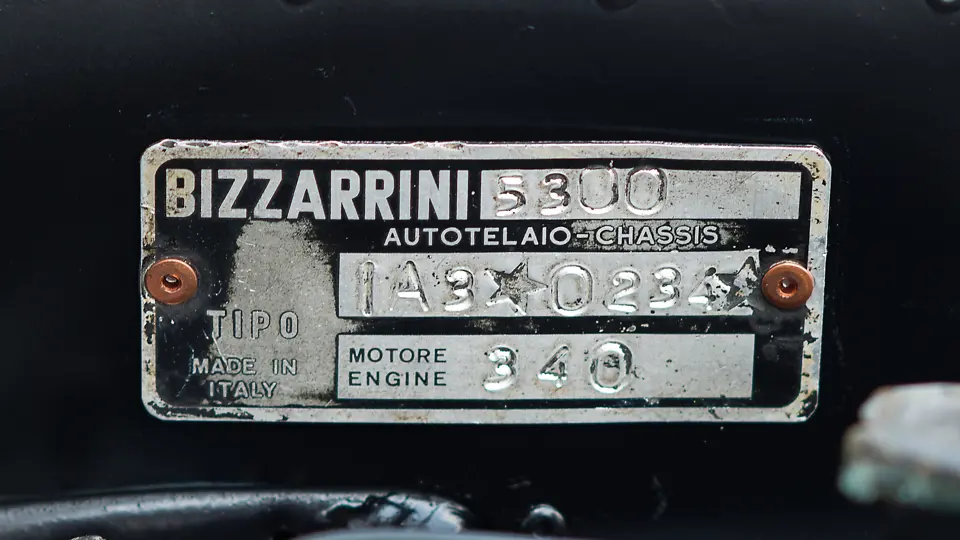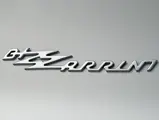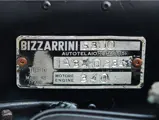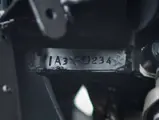
1965 Bizzarrini 5300 GT Strada Alloy
{{lr.item.text}}
$693,000 USD | Sold
{{bidding.lot.reserveStatusFormatted}}
- Exceedingly rare low production example with aluminum bodywork and dramatic Bertone styling
- Featured in such period productions as the 1965 Auto Italiana and the 1966 Quattrorvote
- Recent concours restoration by Gary Bobileff
- Documented history by multiple marque specialists
365 hp, 5,359 cc Chevrolet Corvette overhead-valve V-8 engine, four-speed manual transmission, independent front suspension via wishbones, coil springs, telescopic shocks, and anti-roll bar, de Dion tube, coil-spring, hydraulic shocks, longitudinal struts, and anti-roll bar rear suspension, and four-wheel disc brakes. Wheelbase: 96.4 in.
Born to a family of engineers in Livorno, Tuscany, Giotto Bizzarrini graduated from the University of Pisa in July of 1953 with a degree in mechanical engineering. He was an unassuming man, but his name would soon be inseparably linked to some of the most exciting and successful sporting automobiles ever seen. Shortly after graduation, Bizzarrini joined Alfa Romeo, moving swiftly through the ranks and advancing to the experimental department, where he contributed to the development of the Giulietta and became a skilled test driver.
Bizzarrini then moved to Ferrari as a test driver, but his engineering skills were quickly recognized, and he was made the head of the experimental department. While at Ferrari, Bizzarrini was acknowledged as being largely responsible for the development the 250 Testa Rossa, the Spider California, the 250 SWB, and the 250 GTO, all of which remain among Ferrari’s most successful cars from that era of sports car racing.
In November 1961, an episode known as “the Purge,” or “the Palace Revolt,” occurred at Ferrari, sparked by the dismissal of Ferrari’s influential sales manager, Gerolamo Gardini. This resulted in the mass departure of key engineering and development staff, including Bizzarrini. The defectors quickly formed ATS and received substantial financial backing. Their intention was to rival Ferrari with a Formula One team, including an advanced mid-engine GT road car and lightweight sports racer. But factions soon formed inside the company, and Bizzarrini left when a buyout offer was presented by one of the shareholders.
While working with ATS, Bizzarrini had his own consulting firm, which became known as Autostar. One of his earliest clients was Count Giovanni Volpi, for whom he built the famous 250 SWB derivative, the radical “Breadvan.” A project that brought more fame was his designing the original 3.5-liter V-12 for Ferruccio Lamborghini to use in his cars. He also did development work on the ASA 1000 GT.
Bizzarrini’s most enduring consulting client, and the one with which he has been most closely associated, was Milanese industrialist Renzo Rivolta, of Isothermos and Isetta fame. Rivolta was a keen auto enthusiast who wanted to build a genuinely reliable GT car, and Bizzarrini worked closely with Iso’s chief technician, Pierluigi Raggi, in developing an extremely sophisticated platform-type chassis for the 2+2 Iso Rivolta GT. To solve the reliability issues Renzo had encountered with his personal GT cars, Isos used a Chevrolet Corvette engine and transmission. After much development work, the Iso Rivolta GT debuted to rave reviews at the 1962 Turin Show, with production following in 1963.
Then came the landmark model that would serve as the basis for Bizzarrini’s own car. The Iso Grifo was a spectacular two-seat GT based on a shortened Rivolta chassis, and two variants of the Grifo were shown at the model’s debut at the 1963 Turin Auto Show. The Grifo A3/L (“L” for lusso, or luxury) was on the Bertone stand, while the other, the A3/C (“C” for corsa, or competition) debuted on the Iso stand; the latter car was built by Bizzarrini in his Autostar Works in Livorno. Both Grifos had Giugiaro-designed coachwork, and they were a stunning combination of Italian styling, a race-inspired chassis, and reliable Chevrolet Corvette V-8 power.
Bizzarrini was strongly convinced of the Grifo A3/C’s potential, telling author and noted automotive historian Winston Goodfellow, “I really view the car as my second aerodynamic study, after the Ferrari GTO. The GTO was an excellent car, but it had a lot of little defects at the rear. The Grifo A3 didn’t have these, and technically speaking, the aerodynamics were much better than the GTO.” Key to accomplishing this was its incredibly slinky and low profile and its engine, which was set far behind the front axle, making the A3/C a true front mid-engine design.
For the next 18 months, Bizzarrini made his version of the Grifo under agreement with Iso, and they achieved great success on the track. The car neared 190 mph on the Mulsanne Straight at Le Mans in 1965, and the Bizzarrini-built Grifos won the GT class at Le Mans in 1964 and, again, in 1965.
During this period, however, the relationship between Rivolta and Bizzarrini grew increasingly conflicted, with Bizzarrini wanting to focus on racing and Rivolta wanting to concentrate on production. In the summer of 1965, a deal was ultimately struck, where Bizzarrini would continue to build the cars under his own name in the “Strada” road going form, as well as “Corsa” variants for racing.
The engineer had good reason to want to go out on his own. When Etienne Cornil tested a Grifo A3 Stradale in the September 1964 issue of Sporting Motorist, he had to lift off the accelerator at 163 mph, so as not to over-rev the new engine. “To tell the truth,” Cornil noted, “we have never come across such discerning ease at such speeds.” That and other impressive road manners caused him to sum up, “There is no doubt that engineer Bizzarrini’s creation merits high esteem amongst the world’s fastest grand touring cars.”
While the Bizzarrini Strada was ostensibly a street car, its specifications read like those of an all-out competition car, with lightweight aluminum bodywork, a fabricated platform chassis, and a semi-monocoque body riveted to the frame. This advanced chassis, combined with near-perfect weight distribution, resulted in outstanding performance and incredible handling. Output of the Chevrolet V-8 engine ranged between 350 and 420 horsepower, providing a claimed top speed of up to 180 mph.
These specifications made the GT Strada one of the highest performing cars of its day, as one Ferrari owner unexpectedly found out when the Strada was new. “I was on the freeway,” the engineer related in the book Bizzarrini: A Technician Devoted to Motor Racing, “and a guy in a 275 GTB came up and passed me. When he was just a little ahead of me, I hit the gas and passed him like a rocket! The next day in Livorno he saw me and asked ‘What kind of car is that?’ So I explained to him, and he instantly replied, ‘I will buy it.’”
Despite that type of reaction, very few examples of the 5300 GT Strada were produced during an approximate six-year production run. Production estimates vary between 100 and 149 Iso Grifo A3s and Bizzarrini 5300 GT Stradas and GT Americas, including approximately 70 alloy-bodied Strada examples. There were two primary reasons for such limited numbers, with the first being the lack of a reliable coachbuilder to supply the car bodies, and the second being that Bizzarrini unknowingly took on two shareholders who ran a sophisticated pyramid scheme. “In the end, I fell to two Al Capones,” Bizzarrini told author Goodfellow. “And that was the end of the story.” Afterward, the engineer returned to private practice as a consultant, working for such varied companies as Iso and AMC and building the occasional car for an admiring client.
This example, Bizzarrini Strada chassis number IA3 0234, was featured in several period magazines, including Auto Italiana on December 9, 1965, and Quattroruote in February 1966. The latter was basically Italy’s Road & Track, and in their road test, they saw a 0–100 mph time of 13.7 seconds and a top speed of 161 mph. They raved about the car’s road manners and performance, noting, “What we liked best about the 5300 was its road holding. It is very maneuverable without much effort.”
In the early 1970s, Ted Field, heir to the Marshall Field fortune and eventual media mogul, entrepreneur, and film producer, acquired chassis 0234. During the 1970s, Field was heavily involved in motorsports, as he was the head of Interscope Racing. In August 1974, the car then passed to Barnet Bonar, of Los Altos in the San Francisco Bay Area, and it remained in the family until 2003. It was then acquired by Terry Healey, from Oldtimer Garage Australia, for a client Down Under. The decision was made to restore the car, but progress was lagging and the Bizzarrini was purchased by its current owner in a disassembled state in March 2012.
After extensive research, the current owner made the decision to have the car restored stateside, so IA3 0234 was shipped to Bobileff Motorcar Company in San Diego California. Under Gary Bobileff’s expertise, this 5300 GT underwent an extensive restoration, with all the mechanical components, including the engine, gearbox, differential, suspension, and all other ancillary items, rebuilt. The car has been fitted with a new interior, including the rare 16.5-inch Nardi steering wheel, which appears to be unique to this particular car. The body has also been comprehensively restored, and every part of the body trim and chrome has either been restored or replaced as needed. Great care was taken restoring this car back to how it appeared in Auto Italiana in 1965.
Interestingly, it was common knowledge that this car also carried the chassis number B 0234; however, during the restoration, there was an additional number found stamped on the car, B 0220. Furthermore, there were traces of double taillights and small front park lights, as found on the Iso Grifo A3/C, while the car was being prepared.
Bizzarrini specialist Jack Koobs de Hartog surmised the following: “Chassis B 0220 was built by Bizzarrini as an Iso Grifo A3/C and probably not completed. The chassis was delivered to Drogo on February 1, 1965, and was one of the unfinished cars caught in the transition after March 17, 1965, from Carrozzeria Sports Cars (Piero Drogo) to Carrozzeria B.B.M. and Bizzarrini’s separation from Iso later that year. Importantly, all of the Bizzarrini books and history list this chassis number but nothing further about the car.”
He continued, explaining the double taillights and small front park lights by noting, “This is quite common, as many of the early Bizzarrinis (up until B 0233) have this configuration. As long as the Ministry of Transport had not issued Bizzarrini the official homologation to build the model IA3-340 under his own name (Iso never had that homologation), Bizzarrini followed the original chassis number range. At last, on November 5, 1965, he received that permit. To get the authorization to use the cars that he produced on the public road, he had to renumber the already stamped ‘B’ numbers to ‘IA3.’ It is, therefore, most likely the uncompleted car that was finished as a Bizzarrini GT Strada 5300 with chassis number IA3 0234.”
It is important to note that both Koobs de Hartog and Bizzarrini historian Winston Goodfellow agree with this assessment. As such, this car presents a unique opportunity to acquire one of the most notable Bizzarrini 5300 GTs built. The car has a fantastic history and provenance, and it has been beautifully restored in its original color scheme, as featured in Auto Italiana and Quattroruote magazines. Included are also original copies of said magazines, as well as an original factory brochure and owner’s manual and the extensive history file used to document the restoration. After years of extensive research and correspondence with numerous marque specialists, this alloy-bodied Strada is surely one of the finest examples of Giotto Bizzarrini’s short-lived dream to build a no-holds-barred supercar in his own name.
RM Auctions would like to thank Jack Koobs de Hartog and Winston Goodfellow for their help in researching the unique history of this car.






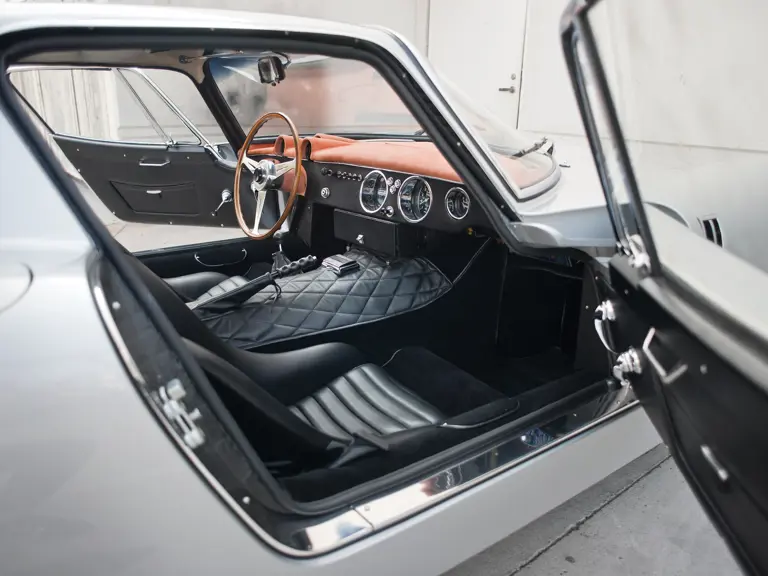
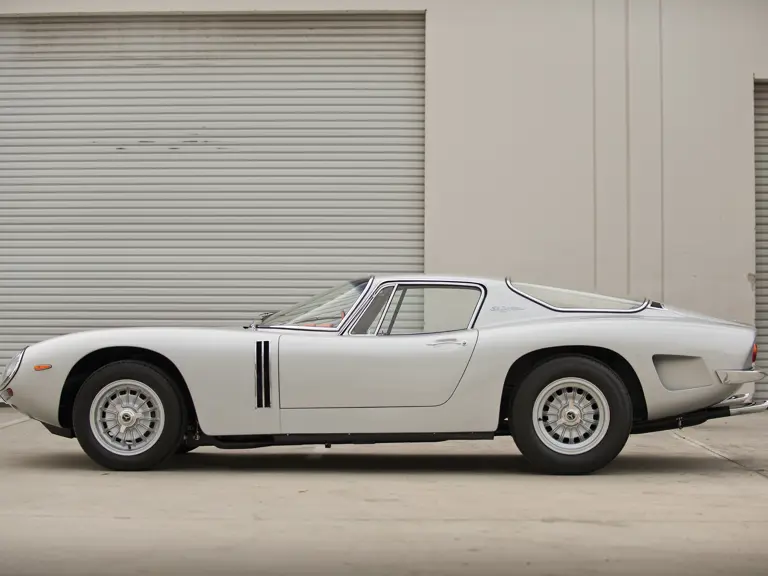
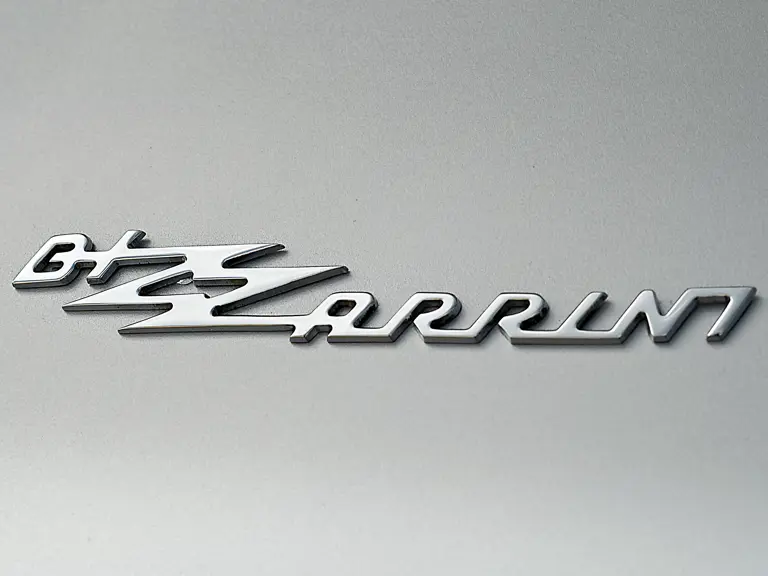
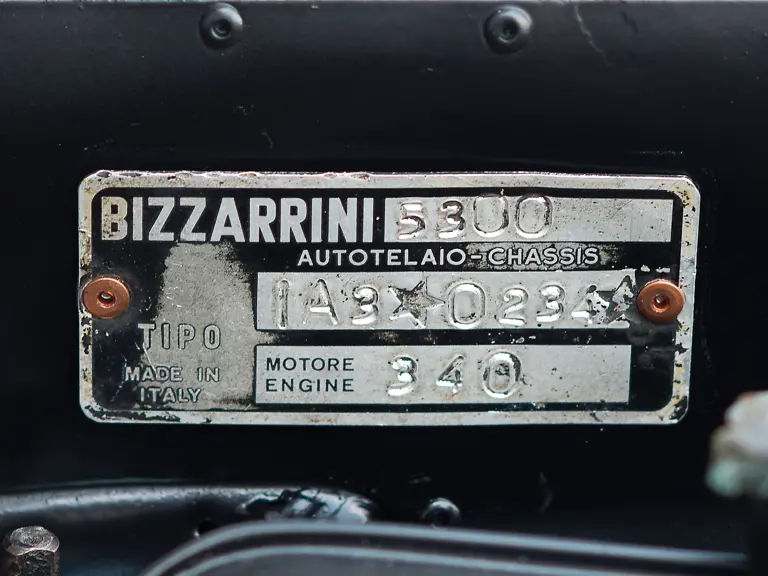
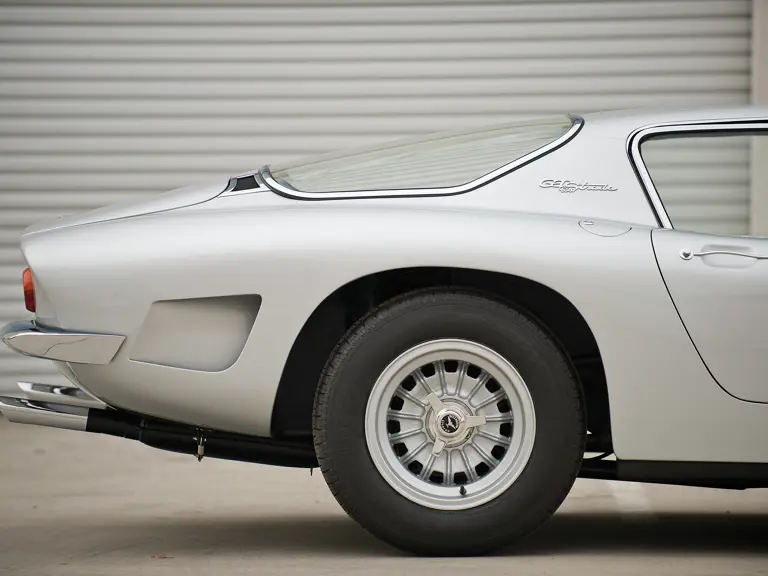
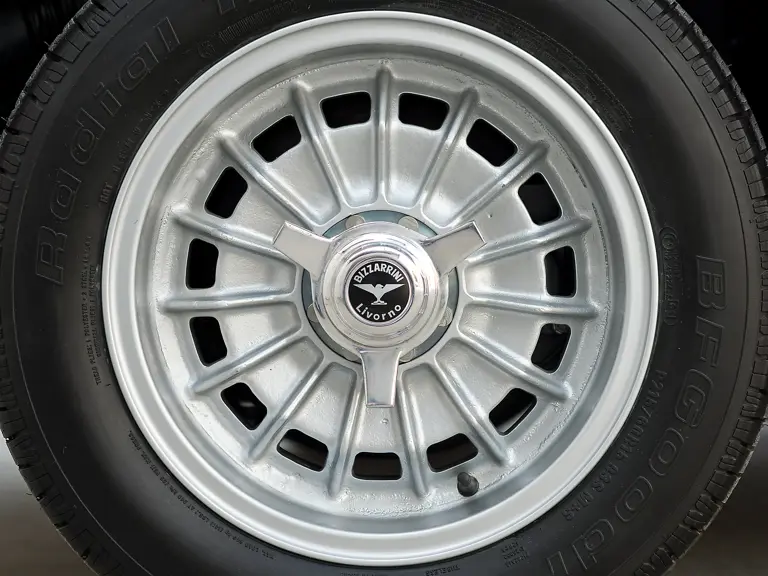
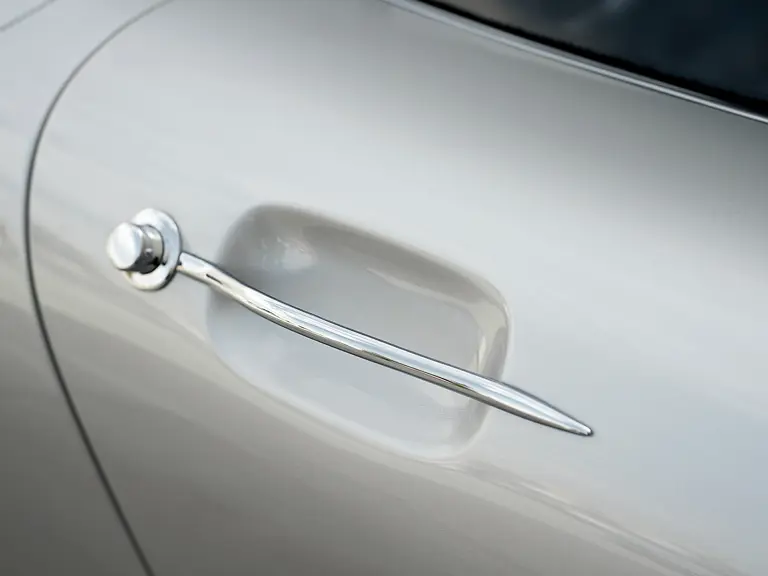
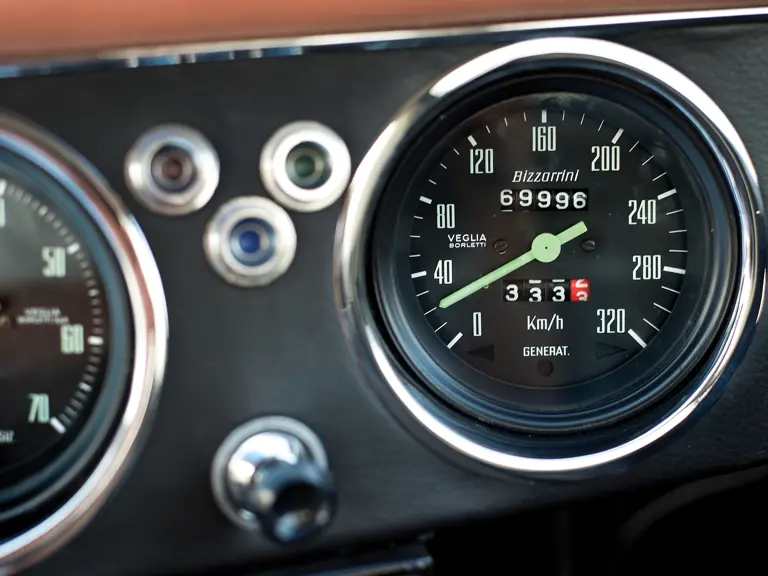
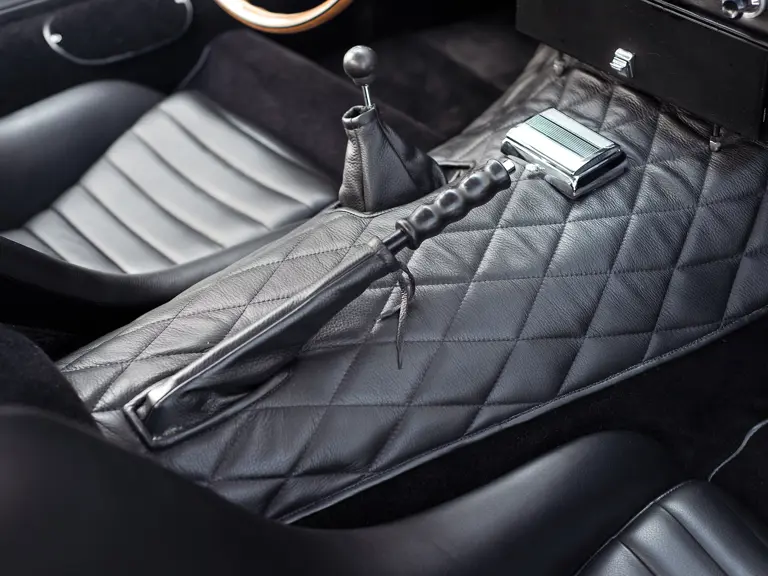
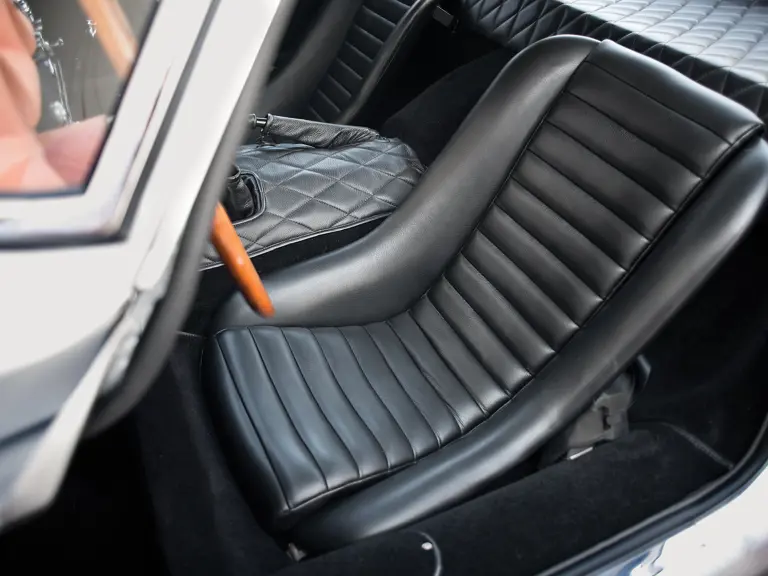




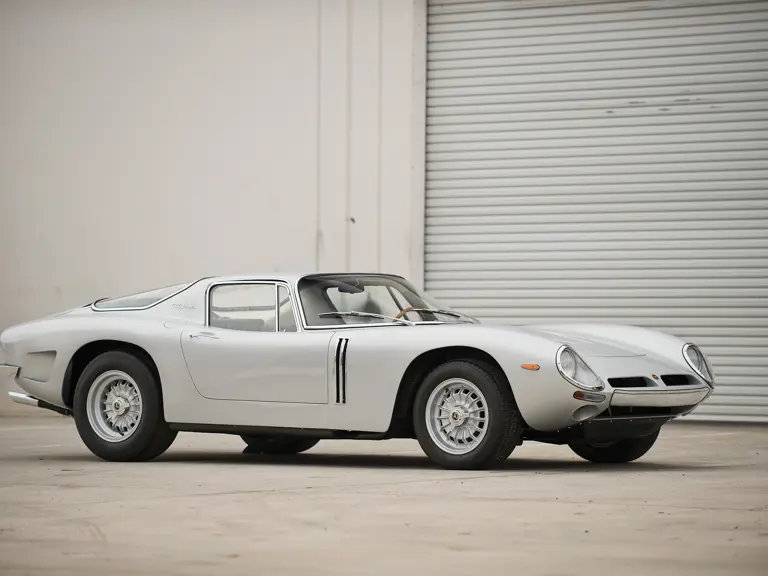
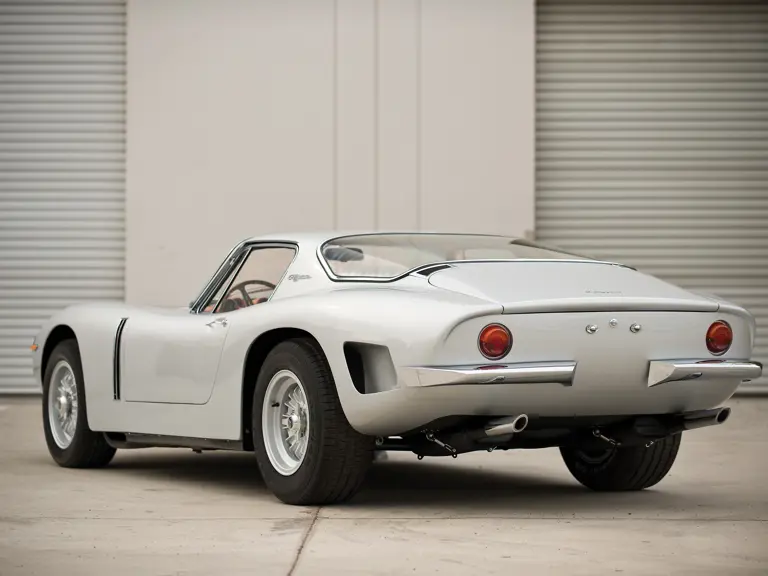
 | Monterey, California
| Monterey, California

